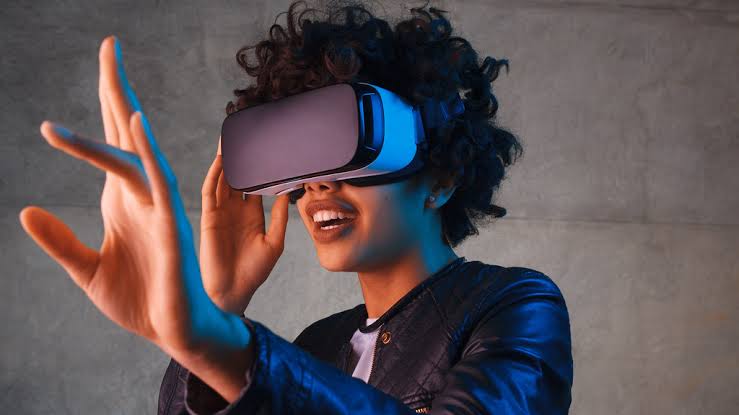Explore the world of virtual reality videography and discover how this innovative medium transforms storytelling and content creation. Learn about its key components, benefits, challenges, and the exciting future of immersive experiences. Perfect for creators and businesses looking to engage audiences in new and interactive ways.
Virtual reality videography has surfaced as a revolutionary platform that reshapes how stories are told and content is produced. Through immersive experiences VR technology enables audiences to interact with narratives like never before. This piece examines the nuances of virtual reality videography, including its elements advantages, challenges and the potential ahead for this cutting edge medium.
Understanding virtual reality videography
Virtual reality videography blends technology with storytelling to create immersive experiences, through VR headsets or interactive platforms. Unlike regular videos with narratives VR content allows users to explore a space and make choices that impact their experience. The technology used in reality videography involves cameras that capture degree footage. These cameras have lenses to record video from angles at once. The footage is then combined using software to offer a seamless immersive journey. Viewers can move through these environments, interact with objects and engage with characters, enhancing their connection to the content.
Components of virtual reality videography
When it comes to crafting immersive reality experiences there are a few key factors to keep in mind.
1. Equipment and cameras: The type of camera used is crucial for producing quality VR content. Options range from models to professional cameras tailored for high end productions. Notable VR cameras include the GoPro MAX, Insta360 One X2 and Ricoh Theta Z1. These devices enable creators to capture breathtaking degree videos and images.
2. Software: Post production work is essential in virtual reality filmmaking. Specialized software such as Adobe Premiere Pro, Final Cut Pro and VR specific programs like Kolor Autopano Video or Mistika VR are crucial for stitching footage together editing and enhancing the end product. These tools empower creators to incorporate effects, sound and interactivity into their VR offerings.
3. Audio: The design plays a role, in crafting immersive experiences. Techniques that enable sound to originate from directions contribute to the realism of virtual reality. By implementing ambisonics or binaural recording methods creators can ensure that audio enhances the visual elements making it more captivating for the audience.
4. Interactivity: A key characteristic of reality is its level of interactivity. Incorporating features like objects or branching storylines empowers users to shape the narrative or surroundings. This demands thoughtful planning and design to ensure that the interactivity feels seamless and enriches the overall experience.
Benefits of virtual reality videography
Virtual reality videography provides advantages that make it appealing, for both content creators and businesses. Here are some key points to consider.
1. Increased Engagement. VR content has the ability to capture audiences in ways that traditional media cannot. The immersive quality of reality draws in attention and promotes participation resulting in engagement levels. Viewers are more likely to remember experiences they can explore and interact with.
2. Unique Storytelling Opportunities. Virtual reality opens up possibilities for storytelling. Creators can present narratives in a way allowing viewers to make choices that impact the story's outcome. This form of storytelling can foster emotional connections and a deeper understanding of the subject matter.
3. Training and Simulation Applications. VR videography is gaining popularity, in training and simulation across industries, such as healthcare, military and aviation. By creating realistic training scenarios users can practice skills in a safe environment enhancing learning outcomes and minimizing risks.
4. Marketing and branding: Companies have the opportunity to utilize reality in their marketing strategies. By providing engaging experiences that highlight their products or services brands can make a lasting impact on their customers. This technology can be employed for tours, product showcases or interactive ads, all contributing to increased brand visibility.
Challenges in virtual reality videography
Virtual reality videography, despite its advantages, comes with challenges. These include;
1. Technical limitations; The technology needed for VR videography can be costly and intricate. Content creators may find it challenging to invest in the gear, software and training required. Moreover producing high quality VR footage necessitates hardware that may not be accessible to everyone.
2. User experience; Ensuring a user experience is crucial in reality. Poorly designed content can cause motion sickness or disorientation, undermining the immersive quality. Creators must thoroughly test their content and prioritize user comfort when crafting VR experiences.
3. Content distribution; Although the demand for VR content is increasing distribution poses a challenge. Viewers require devices to engage with VR experiences and not all platforms support VR content. This limitation can restrict the reach of creators and businesses.
4. Learning Process: Creators new to VR technology may face a learning process. Grasping the details of videography, audio and interactive design demands time and dedication. Nevertheless with the emergence of resources and educational content this hurdle is slowly easing up.
The future of virtual reality videography
The future of reality videography looks bright, with advancements in technology. There are signs that virtual reality will increasingly incorporate intelligence leading to tailored and flexible experiences. Moreover the evolution of lighter and budget friendly VR headsets is set to improve accessibility for both users and creators.
Additionally as virtual reality gains popularity we can anticipate its use beyond entertainment. Sectors like education, travel and real estate are already exploring virtual reality to develop solutions that captivate audiences and enhance educational processes.
Conclusion
Virtual reality video making is a game changer in how we tell stories and create content. By putting audiences into experiences creators can build bonds and boost involvement. Despite some hurdles the advantages of VR make it an appealing platform for both companies and creatives. With technology advancing the capacity, for reality to revolutionize storytelling, training and advertising is set to expand offering a future filled with engaging opportunities.
